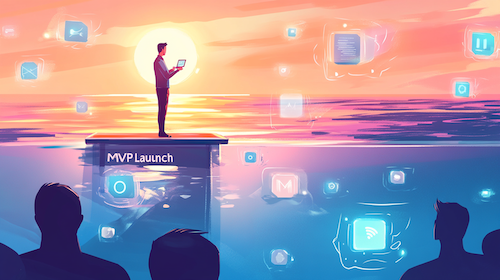The Importance of User Onboarding Emails for MVP Retention
Boost MVP user retention with effective onboarding emails: strategies for indie hackers

The Power of User Onboarding Emails for Your MVP
When you're building a minimum viable product (MVP), every user counts. You've put in the hard work to overcome your fear of shipping your MVP, and now it's time to make sure your users stick around. That's where user onboarding emails come in.
Let's talk about why these emails matter and how they can help you keep users engaged with your product.
A Real-World Success Story
Take Dropbox, for instance. When they launched their MVP, they faced a common challenge: getting users to actually use the product after signing up. Their solution? A killer onboarding email sequence.
Dropbox's emails were simple, friendly, and focused on the key actions users needed to take. They showed how to install the desktop app, upload the first file, and share a folder. This approach helped Dropbox grow from 100,000 to 4 million users in just 15 months.
Why User Onboarding Emails Work
1. First Impressions Count: Your welcome email is often the first interaction a user has with your product outside the app. Make it count by setting the right tone and expectations.
2. Guide Users to Success: Break down the steps to get started into bite-sized actions. This helps users overcome the initial hurdle of using a new product.
3. Build Habits: Regular, well-timed emails can encourage users to form habits around your product, increasing long-term retention.
4. Showcase Value: Use emails to highlight features users might have missed or to show how others are benefiting from your product.
Crafting Effective Onboarding Emails
Here are some tips to create onboarding emails that keep users coming back:
- Keep it simple: Focus on one action per email. Don't overwhelm users with too much information.
- Be personal: Use the user's name and tailor content based on their actions (or inactions) in your app.
- Time it right: Send emails when users are most likely to engage. This might be right after sign-up, or at specific intervals afterward.
- Show, don't just tell: Use screenshots or GIFs to visually guide users through key actions.
- Provide value: Each email should offer something useful, whether it's a tip, a feature highlight, or a quick win.
Measuring Success
To know if your onboarding emails are working, keep an eye on these metrics:
- Open rates
- Click-through rates
- Action completion rates (Did users do what you asked in the email?)
- Retention rates over time
Don't be afraid to gather feedback from your users about the emails. Their input can be invaluable for improving your onboarding process.
Balancing Act: Don't Overdo It
While onboarding emails are important, remember that your ultimate goal is to get users to engage with your product, not your emails. Find the right balance between helpful guidance and letting users explore on their own.
Continuous Improvement
Your onboarding email sequence isn't set in stone. As you validate your MVP idea and gather more data, be ready to tweak and improve your emails. What works for one group of users might not work for another.
Final Thoughts
User onboarding emails are a powerful tool in your MVP retention arsenal. They help bridge the gap between signup and active use, guiding users to experience the value of your product firsthand. By crafting thoughtful, user-focused onboarding emails, you're not just reducing churn – you're laying the groundwork for long-term user engagement and product success.
Remember, done is better than perfect when it comes to MVP development. Start with a basic onboarding email sequence and improve it over time based on user feedback and data.
Extra Tip: Segment Your Users
As you grow, consider segmenting your users based on their behavior or characteristics. This allows you to tailor your onboarding emails even further, providing more relevant guidance and increasing the chances of retention. For example, you might have different sequences for power users versus those who are slow to adopt key features.
Frequently Asked Questions
Start With Documentation
Create a simple system to document every support interaction. Use minimum viable processes to ensure consistency without overwhelming your team.
Build Support-Development Bridges
Set up regular meetings between support and development teams. Share support insights using customized dashboards to keep everyone aligned.
Test Solutions Quickly
Use feature flags to test solutions with small user groups before full rollout. This reduces risk and accelerates learning.
Measure Impact
Track how your solutions affect support volume and user satisfaction. Implement customer health scoring to measure improvement.
Start With Documentation
Create a simple system to document every support interaction. Use minimum viable processes to ensure consistency without overwhelming your team.
Build Support-Development Bridges
Set up regular meetings between support and development teams. Share support insights using customized dashboards to keep everyone aligned.
Test Solutions Quickly
Use feature flags to test solutions with small user groups before full rollout. This reduces risk and accelerates learning.
Measure Impact
Track how your solutions affect support volume and user satisfaction. Implement customer health scoring to measure improvement.
First Published:
Updated: